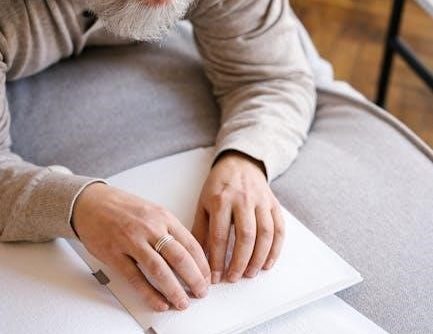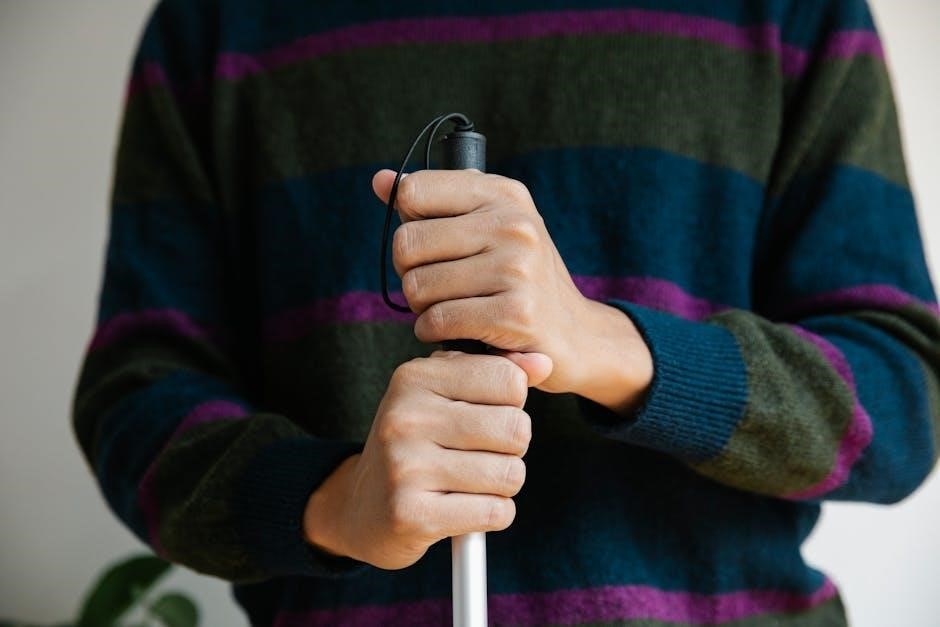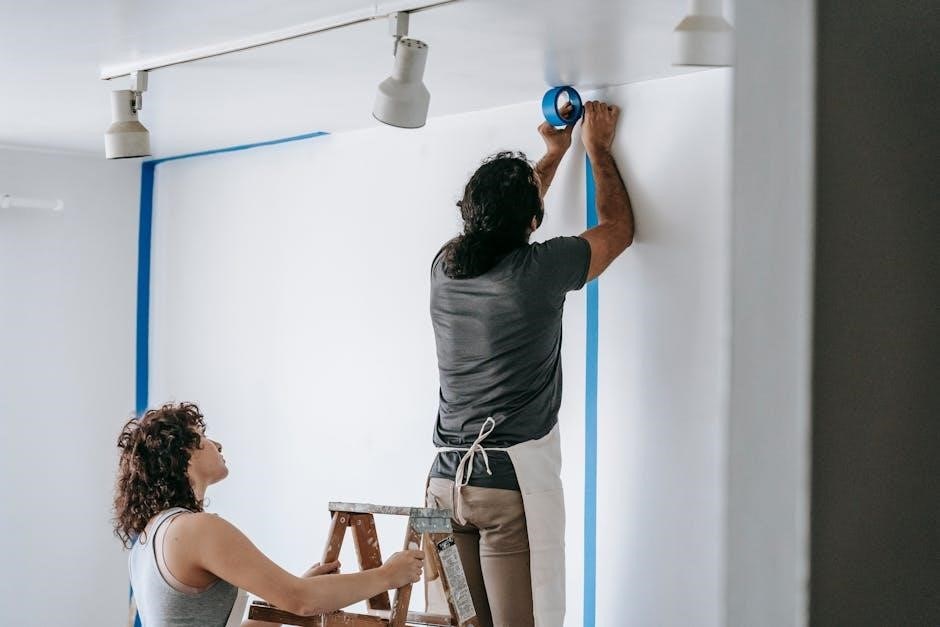
Homophobia, often rooted in societal prejudice, causes profound emotional and psychological harm, leading to shame, self-hatred, and mental health struggles for LGBTQ+ individuals.
1.1 Defining Homophobia and Internalized Homophobia
Homophobia refers to the fear, prejudice, or discrimination directed toward individuals based on their sexual orientation or gender identity; It manifests in societal attitudes, policies, and individual behaviors, often perpetuating harm and marginalization. Internalized homophobia occurs when LGBTQ+ individuals internalize these negative societal messages, leading to self-hatred, shame, and a distorted self-image. Both forms of homophobia create emotional and psychological distress, making it essential to address and overcome these harmful beliefs and feelings.
1.2 The Purpose of This Guide
This guide aims to provide a comprehensive resource for individuals struggling with homophobia-induced shame and self-hatred. It offers practical strategies, emotional support, and a pathway toward healing and self-acceptance. By exploring the roots of homophobia, its impact, and effective coping mechanisms, the guide empowers readers to reclaim their identities and build a fulfilling life. It serves as a tool for personal growth, fostering resilience and hope for those navigating the challenges of internalized homophobia and societal prejudice.

1.3 The Importance of Addressing Shame and Self-Hatred
Addressing shame and self-hatred is crucial for healing from homophobia. These emotions, deeply rooted in societal and internalized prejudice, can lead to mental health struggles and a fractured sense of self. By confronting and understanding these feelings, individuals can break free from harmful patterns and cultivate self-compassion. This process is essential for rebuilding confidence, fostering resilience, and embracing authenticity. It paves the way for a more fulfilling and empowered life, free from the burdens of homophobia-induced negativity.

Understanding the Roots of Homophobia-Induced Shame
Societal norms, cultural expectations, and personal experiences shape the roots of homophobia-induced shame, often intensified by internalized beliefs and trauma, forming a complex emotional foundation.
2.1 Societal and Cultural Influences
Societal and cultural norms often perpetuate homophobia through discriminatory laws, religious teachings, and media representation. These external forces can foster a hostile environment, leading to internalized shame. Normalization of heteronormativity reinforces the idea that being LGBTQ+ is “less than,” making individuals question their worth. Cultural stigma is deeply ingrained, often passed down through generations, creating a cycle of prejudice. This collective rejection can lead to self-hatred, as individuals struggle to reconcile their true selves with societal expectations.
2.2 Personal Experiences and Trauma
Personal experiences, such as bullying, rejection, or verbal abuse, often contribute to feelings of shame and self-hatred in LGBTQ+ individuals. Traumatic events, like being ostracized by family or harassed, can deeply embed internalized homophobia. These experiences may lead to self-doubt and a belief that one’s identity is “wrong.” Over time, such trauma can manifest as self-hatred, making it difficult for individuals to accept and love themselves. Acknowledging these personal wounds is a crucial step toward healing and overcoming the emotional scars of homophobia.
2.3 The Role of Internalized Homophobia
Internalized homophobia occurs when individuals unconsciously adopt societal prejudices against LGBTQ+ people, leading to self-rejection and shame. This internalization often stems from early exposure to homophobic messages, which can make people feel unworthy or flawed. It manifests in self-criticism, denial of one’s identity, or even self-loathing. Internalized homophobia can hinder personal growth and relationships, as it creates a deep-seated conflict between one’s true self and the negative perceptions instilled by society. Recognizing and addressing this internalized bias is essential for healing and self-acceptance.

The Psychological and Emotional Toll
Homophobia-induced shame and self-hatred can lead to severe mental health struggles, including anxiety, depression, and low self-esteem, deeply affecting emotional well-being and quality of life.
3.1 Mental Health Consequences
Homophobia-induced shame and self-hatred often lead to severe mental health issues, including anxiety, depression, and low self-esteem. These struggles can manifest as chronic stress, emotional numbness, or even suicidal thoughts. The internalized negativity and societal rejection exacerbate feelings of inadequacy, making it difficult to cope with daily life. If left unaddressed, these mental health challenges can significantly impair overall well-being and hinder personal growth, emphasizing the urgent need for healing and support.
3.2 Strained Relationships and Social Isolation
Homophobia-induced shame often leads to strained relationships and social isolation, as individuals may withdraw to avoid judgment or rejection. Fear of being rejected by family, friends, or romantic partners can cause emotional distancing, making it difficult to form intimate connections. This isolation can exacerbate feelings of loneliness and disconnection, further worsening mental health. Hiding one’s true self creates barriers to trust and understanding, leading to superficial relationships. Breaking this cycle requires embracing authenticity and seeking supportive networks to rebuild meaningful connections and foster healing.
3.3 The Cycle of Self-Hatred and Shame
Homophobia often perpetuates a destructive cycle of self-hatred and shame, where individuals internalize negative societal views, leading to self-blame and low self-esteem. This cycle reinforces feelings of worthlessness, making it difficult to accept oneself authentically. Shame can manifest as self-criticism or self-destructive behaviors, further entrenching emotional pain. Breaking this cycle requires confronting internalized homophobia and challenging harmful beliefs. Self-awareness and self-compassion are essential to interrupting this pattern, allowing individuals to heal and reclaim their self-worth. This process is both deeply personal and profoundly transformative.

Strategies for Overcoming Shame and Self-Hatred
Effective strategies for overcoming shame and self-hatred involve acknowledging pain, developing self-compassion, redefining self-worth, challenging negative beliefs, and building resilience through therapy and supportive communities.
4.1 Self-Awareness and Acknowledgment
Recognizing and understanding the roots of shame and self-hatred is crucial for healing. Self-awareness involves acknowledging how homophobia has shaped your beliefs and emotions, often unconsciously. By accepting these feelings without judgment, you create space for authenticity and growth. This process allows you to identify harmful internalized messages and begin dismantling them. Self-awareness is the foundation for redefining your self-worth and moving toward liberation from societal expectations. It’s the first step in reclaiming your identity and building a more compassionate relationship with yourself.
4.2 Redefining Personal Identity and Self-Worth
Redefining your identity and self-worth involves reclaiming your authentic self and rejecting harmful narratives imposed by homophobia. This process empowers you to embrace your sexuality as a natural and positive aspect of who you are. By challenging internalized Shame and fostering self-acceptance, you can build a healthier sense of self. Celebrating your uniqueness and strengths helps shift your identity from one defined by societal rejection to one rooted in pride and resilience. This transformation is essential for healing and living a fulfilling, authentic life.
4.3 Challenging Negative Thoughts and Stereotypes
Challenging negative thoughts and stereotypes is crucial for overcoming homophobia-induced shame. Identify and question harmful beliefs rooted in societal prejudice. Replace self-critical narratives with affirming truths about your worth; Educate yourself about LGBTQ+ experiences and dismantle stereotypes. Exposure to diverse perspectives can help reframe your mindset. This process fosters self-acceptance and resilience, allowing you to break free from internalized homophobia and embrace your authentic self with confidence and pride.
4.4 The Role of Therapy and Counseling
Therapy and counseling play a vital role in addressing homophobia-induced shame by providing a safe space for self-reflection and healing. Working with a trained therapist, especially one who is LGBTQ+ affirmative, can help you explore and challenge internalized homophobic beliefs. Techniques like cognitive-behavioral therapy (CBT) can reframe negative thought patterns, while trauma-informed care addresses past wounds. Therapy also offers tools to rebuild self-esteem and foster self-acceptance, empowering you to live authentically. A supportive therapeutic relationship can be a powerful catalyst for personal growth and emotional liberation.

Building a Support System
Building a support system is crucial for overcoming homophobia-induced shame. Surrounding yourself with understanding allies, supportive communities, and affirming groups fosters acceptance, empowerment, and healing.
5.1 The Importance of Community and Belonging
Community and belonging are vital for healing from homophobia-induced shame. Being part of a supportive group provides acceptance, validation, and connection, countering isolation and self-doubt. Surrounding yourself with understanding individuals fosters resilience, helping you reclaim your identity and build confidence. Shared experiences within a community create a safe space to express emotions and challenges, promoting emotional healing and empowerment. Feeling a sense of belonging reduces feelings of alienation, enabling you to embrace your authenticity and live a fulfilling life free from internalized shame.
5;2 Finding Allies and Supportive Networks
Finding allies and supportive networks is crucial for overcoming homophobia-related shame. Allies provide emotional support, validation, and advocacy, helping to counteract feelings of isolation. Building relationships with supportive friends, family, or mentors creates a protective environment where self-acceptance can flourish. Engaging with LGBTQ+ organizations or online communities offers additional resources and connection. These networks not only provide practical assistance but also foster a sense of belonging and empowerment, helping individuals break free from the grip of internalized homophobia and build a more confident, authentic life.
5.3 Engaging with LGBTQ+ Affirmative Spaces
Engaging with LGBTQ+ affirmative spaces is vital for healing and growth. These spaces, whether online or in-person, provide acceptance, understanding, and community. They reduce feelings of isolation and offer a safe environment to explore identity without judgment. Affirmative spaces foster resilience by exposing individuals to positive role models and shared experiences, helping to counteract internalized homophobia. Participating in such communities can empower individuals to embrace their authenticity and build confidence, replacing shame with self-acceptance and pride.

The Power of Self-Compassion and Self-Love
Self-compassion and self-love are foundational to healing from homophobia-induced shame. They empower individuals to embrace their authenticity, fostering resilience and replacing self-hatred with acceptance and pride.
6.1 Practicing Self-Compassion
Practicing self-compassion involves treating oneself with kindness, understanding, and patience, especially when confronting homophobic shame. It requires acknowledging that your feelings are valid and human, rather than defective. Mindfulness can help you observe self-critical thoughts without judgment, fostering a gentle and supportive relationship with yourself. By challenging harsh self-talk and replacing it with affirming statements, you can cultivate a nurturing inner voice. Self-compassion is not self-pity but a powerful tool to heal emotional wounds and rebuild self-worth.
6.2 Embracing Authenticity
Embracing authenticity means letting go of societal expectations and fully accepting your true self. It involves acknowledging your identity without apology, which can be incredibly liberating. Authenticity allows you to live align with your values and desires, fostering self-acceptance and reducing internal conflict. By being true to yourself, you break free from the weight of homophobia-induced shame and reclaim your right to exist without hiding. This journey requires courage, but it is essential for healing and living a fulfilling, genuine life.
6.3 Celebrating Personal Strengths and Resilience
Celebrating personal strengths and resilience is crucial for overcoming shame and self-hatred. Recognizing your ability to navigate adversity and thrive despite homophobia fosters self-pride. Acknowledge the courage it takes to be yourself in a world that often seeks to erase you. Honoring your resilience reminds you that your experiences are valid and your strength is remarkable. This celebration builds confidence, empowering you to embrace your identity fully and live authentically, free from the shadows of societal judgment.

Addressing Societal Homophobia
Addressing societal homophobia requires collective action, education, and advocacy to dismantle harmful norms and promote inclusivity, ensuring safer environments for LGBTQ+ individuals to thrive.
7.1 Advocating for Change
Advocating for change involves challenging systemic homophobia and promoting equality through activism, policy support, and community engagement. By amplifying marginalized voices and educating others, individuals can help dismantle oppressive structures. Grassroots efforts, public advocacy, and allies’ involvement are crucial in fostering inclusive environments. Collective action can lead to meaningful societal shifts, ensuring LGBTQ+ individuals are valued and protected. Every voice matters in the fight for justice and equality, creating a ripple effect that inspires broader change and acceptance.
7.2 Educating Others About Homophobia
Educating others about homophobia is vital for fostering understanding and empathy. Sharing accurate information about LGBTQ+ experiences can dispel myths and stereotypes that fuel prejudice. Encouraging open, respectful conversations helps to challenge harmful beliefs and promote acceptance. Personal stories and experiences can be powerful tools for bridging gaps and humanizing the impact of homophobia. By empowering others with knowledge, we create a foundation for inclusive environments and support for marginalized communities. Education is a key step toward dismantling homophobia and building a more compassionate society.

7.3 The Role of Allyship in Creating Safe Spaces
Allyship plays a crucial role in creating safe spaces by actively supporting LGBTQ+ individuals and challenging homophobia. Allies can amplify marginalized voices, listen without judgment, and advocate for inclusivity. By using inclusive language and standing against homophobic behaviors, allies help reduce stigma and foster acceptance. Their efforts contribute to dismantling systemic prejudice and promoting a culture of respect. Safe spaces, supported by allies, empower individuals to embrace their authenticity and heal from shame, fostering a more inclusive and compassionate society for all.
Overcoming homophobia-induced shame requires courage, self-compassion, and collective action. Embracing authenticity and fostering inclusive communities pave the way for healing and a hopeful, equitable future for all.
8.1 Recap of Key Takeaways
This guide emphasizes the importance of self-awareness, challenging internalized homophobia, and building supportive networks. It highlights the transformative power of self-compassion, embracing authenticity, and advocating for societal change. By addressing personal shame and fostering inclusive communities, individuals can move toward healing and empowerment. The journey involves recognizing the impact of societal homophobia, redefining self-worth, and actively working to create a world that values diversity and promotes equality for all LGBTQ+ individuals.
8.2 Encouragement for Continued Growth

Embrace your journey with patience and kindness. Growth is a lifelong process, and every step toward self-acceptance is a victory. Celebrate your resilience and the courage to challenge harmful narratives. Surround yourself with loving support and continue seeking resources for healing. Remember, your worth is inherent, and your authenticity is a strength. Keep moving forward, knowing that each day brings new opportunities to embrace your true self and contribute to a more inclusive world.
8.3 Hope for a Brighter, More Inclusive Future
Envision a future where diversity is celebrated, and homophobia no longer dictates shame or self-hatred. Progress is being made, and collective efforts can create a world where LGBTQ+ individuals thrive. Advocacy, education, and allyship are powerful tools to dismantle prejudice. By fostering empathy and understanding, society can move toward acceptance. Remember, hope is a catalyst for change. Together, we can build a future where everyone, regardless of identity, lives authentically and without fear. The journey toward inclusivity is ongoing, but a brighter tomorrow is within reach.